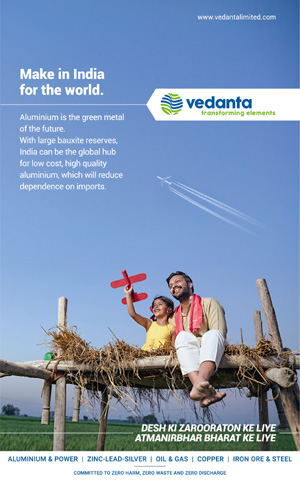Rain Water Harvesting
By Er Taraprasad Mishra
Jajpur, Sept 13 : Rainwater harvesting is a system that collecting and stores the rainwater in tanks and other reservoirs for future use, as it is very important to conserve rainwater so that there is no shortage of this natural resource.
Rain Water Harvesting as a method of utilizing rain water for domestic and agricultural use is already widely used throughout the world. It is a method which has been used since ancient times and is increasingly being accepted as a practical method of providing potable water in development projects throughout the world.
Water scarcity has been the greatest worry of the century for many countries in the world. It is predicted that the next World War will be fought for water. Given the importance of water to sustain the population and economic growth across different countries, governments around the world are coming up with innovative solutions to save water.
In this rainwater harvesting essay, we shall be talking about the innovative ways that rainwater harvesting will help us save water. We shall also be talking about examples of rainwater harvesting in different countries which has overcome the scarcity of water completely. Rainwater harvesting helps in maintaining a healthy balance in the water cycle of our ecology.
A water cycle in our ecosystem is a cycle in which the water from the surface of oceans, river and other water bodies evaporate and condense to form clouds in the atmosphere. These clouds after accumulating enough moisture burst out to have a rainbow pour on land and water bodies. Evaporation and condensation are the two main processes in our water cycle.
Due to irresponsible usage of water by human beings this water cycle in the ecosystem is being affected and rainwater harvesting is found to be an innovative solution to restore balance to this water cycle. When there is a heavy rain pour in a patch of land where there would be no space for the rain to percolate into the ground, it can cause floods in that region.
Places like Cherrapunji and Agumbe are considered to be the places in Indi that receive the heaviest rainfall throughout the year. It becomes of utmost importance to practice the method of rainwater harvesting in such places. If not practiced properly, the rainwater will start accumulating on the ground and eventually lead to floods causing heavy damage to life and property.
Another importance of rainwater harvesting is that it reduces our dependency on river water. Rivers such as Kaveri, Krishna, Ganga, and the Yamuna have been over-exploited by human beings for industrial and domestic purposes.
This overexploitation of our water bodies as cast negative effects on the aquatic life in the country. Also, there has been enormous pollution witnessed in oceans and seas of the world which is in turn affecting aquatic life in that region.
If rainwater harvesting is practiced properly then our dependence on river water will reduce and nature will start healing eventually. Now that we have spoken about the importance of rainwater in this rainwater harvesting essay we shall also be talking about the various challenges in practicing this method.
Practicing rainwater harvesting is easier said than done. Because rainwater harvesting will only be successful if everyone in the country follows it. Robust policies and laws should be in place to make rainwater harvesting compulsory in residential and commercial places.
Most of the water from rivers and lakes are used for industrial and agricultural purposes and hence it is only logical to hold industries and the agriculture sector in whole accountable for the irresponsible use of freshwater.
Factories and industrial owners should practice rainwater harvesting compulsory at their premises. But imposing the practice of rainwater harvesting on farmers is quite difficult given the additional financial burden in following this practice.
Hence, the government should incentivize farmers to practice rainwater harvesting and educate them about the uses of rainwater harvesting in cultivating the land. In fact, rainwater harvesting will make farmers less dependent on rivers, lakes and canals as well as eliminate the risk of unpredictable climatic conditions.
I would like to conclude by saying that rainwater harvesting is the only viable solution we have in order to prevent complete draught in the world. Rainwater harvesting can be easily practised by rich industrial corporations but it would be difficult for regular citizens and farmers of the country to practice.
The government and the international community should address the challenges in rainwater harvesting to make this world a better place. Rainwater harvesting is a simple technique in which we allow the rainwater to percolate through the open ground into the water table. It requires very fewer efforts for people to practice rainwater harvesting at their houses but has great impacts on our ecosystem and environment.
If rainwater harvesting is not practiced well, then our cities and villages will forever be dependent on the limited freshwater capacity of the earth. We should remember that only 3% of the water on Earth is made up of freshwater.
If we don’t follow innovative practices for saving the water, then there would be no water for our future generation to survive and grow. Rainwater harvesting cannot be implemented overnight by all the people in the country.
It is a gradual process that requires efforts from governments and civil society members. Not everyone in the country will understand the importance of rainwater harvesting and hence there should be educational and awareness campaigns in rural parts of the country as well as education institutes to bring about the required awareness about the uses of rainwater harvesting.
I would like to conclude by saying that rainwater harvesting is the best-known practice for a man to save water. Creating concrete jungles might help in economic development but will result in environmental degradation and hence a patch of land should be kept open within the concrete jungle so that the rainwater will have space to percolate into the groundwater table.
It has wide application also in urban and semi -urban areas where the reliability and quality of piped water is increasingly being questioned. For centuries the world has relied upon rainwater harvesting to supply water for household, landscape, and agricultural uses.
Before city water systems were developed rainwater was collected (mostly from roofs) and stored in cisterns or storage tanks. Today, many parts of the world, including Hawaii and the entire continent of Australia, promote rainwater as the principal means of supplying household water.
On many Caribbean islands where rainwater is the most viable water supply option, public buildings, homes, and resorts all collect rainwater to supply their needs.
In Hong Kong, rainwater is collected from skyscrapers to supply water needs. Rainwater harvesting promotes self-sufficiency and fosters an appreciation for water as a resource. It also promotes water conservation.Rainwater harvesting also conserves energy as the energy input needed to operate a centralized water system is bypassed.
Many systems require only a small pump to create water pressure in household pipes. Local erosion and flooding from impervious cover associated with buildings is lessened as a portion of local rainfall is diverted into collection tanks. Rainwater is one of the purest sources of water available. Its quality almost always exceeds that of ground or surface water.
It does not come into contact with soil or rocks where it can dissolve minerals and salts nor does it come into contact with many of the pollutants that are often discharged into local surface waters or contaminate ground water supplies. However, rainwater quality is influenced by where it falls. Rainfall in areas where heavy industry or crop dusting is prevalent may not have the same purity as rain falling in other areas.
Rainwater is soft. It can significantly lower the quantity of detergents and soaps needed for cleaning. Soap scum and hardness deposits do not occur. There is no need for a water softener as there often is with well water. Water heaters and pipes are free of the deposits caused by hard water and should last longer.
Rainwater harvesting is the process to save and store rainwater that can be used for various purposes. The idea behind the rainwater harvesting is to prevent the rainwater from running off and storing it in tanks or ponds so that it can be used later. This method is very helpful to combat the water scarcity problems presently prevailing in India.
So we must promote this practice to have access to clean water without much cost. Significance of Rainwater Harvesting implies that it is a very economical and easy practice to follow. Considering the water scarcity across the globe, it is the need of an hour to start doing rainwater harvesting.
As we know, that we do not have much surface water left to meet our ever-increasing demands of water, therefore it is very important to realize the benefits of rainwater harvesting. We can get additional water by preventing rainwater from running off.
Also, groundwater levels are decreasing day by day as more number of people living in flats and houses are using submersible pumps to use the groundwater. There are many other reasons behind groundwater depletion including deforestation, urbanization, high population, and much more.
There are basically two types of rainwater harvesting namely surface runoff harvesting and rooftop harvesting. In a surface runoff method, we make a path from the surface to a storage place like tank or pond.
When it rains, a large amount of water on the surface is directed to the pond and is used for various purposes. In rooftop rainwater harvesting, the roof of a building acts as a collection component for rainwater.
The roof is equipped with pipelines that directly open into a tank. The rainwater when falls on the roofs are diverted into the tanks thus preventing the water from falling off. Thus, rainwater harvesting is a very economical method that saves water and also prevents it from logging on the roads.






